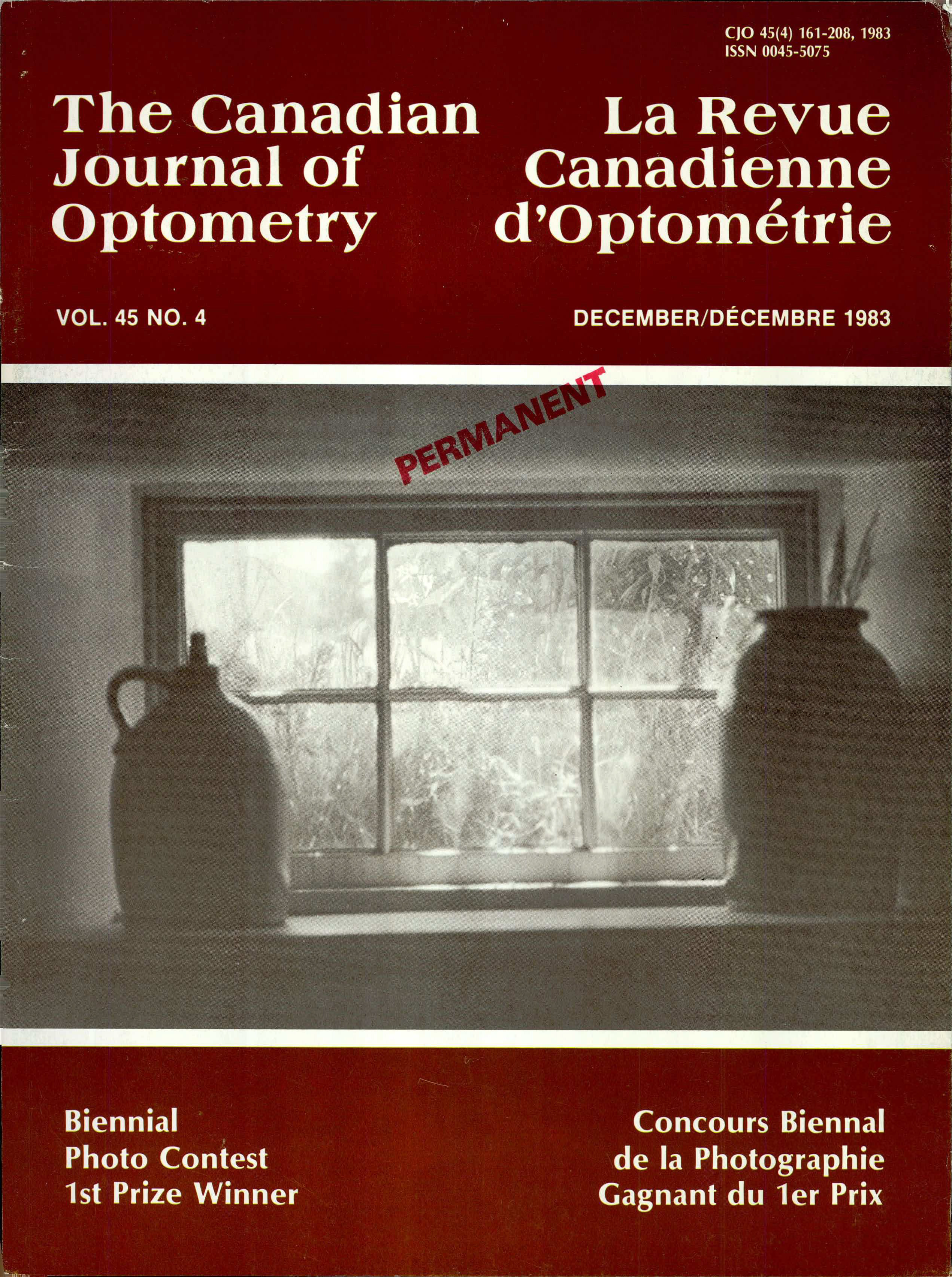A Stereoacuity Test for Detecting Aniseikonia
DOI :
https://doi.org/10.15353/cjo.v45i4.4317Résumé
Thresholds of stereopsis were measured bilaterally using two vertical pins, one nearer than the other to the subject. In the majority of cases, the threshold when the left pin was nearer was different from the threshold when the right pin was nearer. This inequality was thought to be caused by aniseikonia. When calculated from bilateral inequalities, aniseikonia was found to be of small amount. The effect of inequalities on the measurement of stereoacuity was also investigated by comparing bilateral and unilateral arrangements of the same data. Stereoacuity calculated from bilateral data was found to be more precise than that calculated conventionally ( i.e. unilaterally).
Publié-e
Comment citer
Numéro
Rubrique
Licence
© W L Larson 1983

Cette œuvre est sous licence Creative Commons Attribution - Pas d'Utilisation Commerciale - Pas de Modification 4.0 International.


